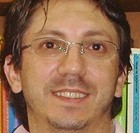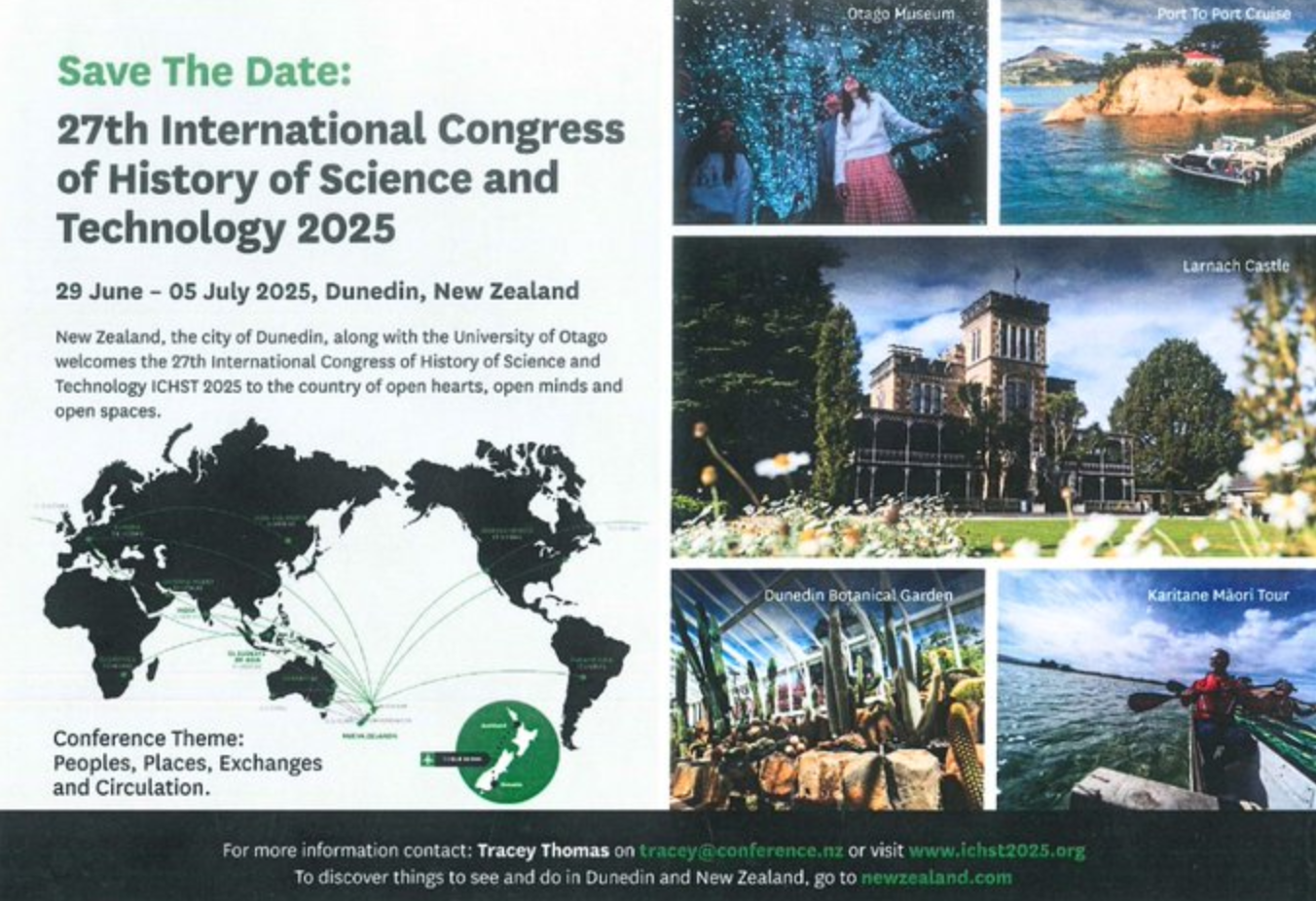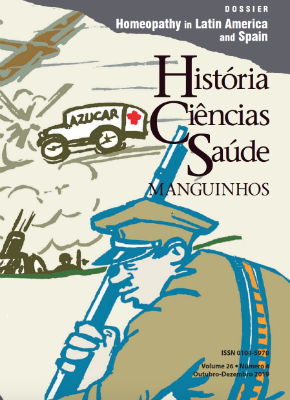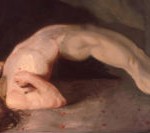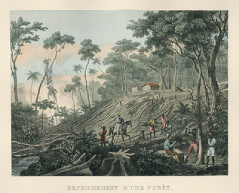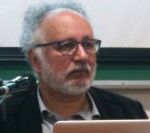April/2013
 Despite his major role in helping to understand infectious diseases like yellow fever, Oroya fever (Carrion’s disease), and epidemic typhus, most Brazilians know practically nothing about their fellow citizen Henrique da Rocha Lima, a microbiologist and pathologist. His identification with Germany and his ties to German medicine at a time when the latter was associated with horrendous Nazi atrocities may have contributed to this ‘curtain of silence’.
Despite his major role in helping to understand infectious diseases like yellow fever, Oroya fever (Carrion’s disease), and epidemic typhus, most Brazilians know practically nothing about their fellow citizen Henrique da Rocha Lima, a microbiologist and pathologist. His identification with Germany and his ties to German medicine at a time when the latter was associated with horrendous Nazi atrocities may have contributed to this ‘curtain of silence’.
This is the theory of historian André Felipe Cândido da Silva, who conducted in-depth research on the life and work of Rocha Lima and who received an honorable mention from Capes in 2012 for his doctoral dissertation, presented at the Casa de Oswaldo Cruz/Fiocruz under the advisorship of Magali Romero Sá and Jaime Benchimol.
Cândido da Silva, who is doing post-doctoral work in history at the University of São Paulo (USP), published the article “A Brazilian in the Reich of Wilhelm II: Henrique da Rocha Lima, Brazil-Germany relations and the Instituto Oswaldo Cruz, 1901-1909” in the journal História, Ciências, Saúde – Manguinhos (v. 20, no. 1).
In this interview to the journal’s blog, the historian talks about the importance of the efforts by this scientist, who promoted scientific relations between Brazil and Germany in the first half of the twentieth century.
Your article is part of a more comprehensive study on the scientist Henrique da Rocha Lima. What was its more general scope? What were your findings?
The article is part of the doctoral dissertation that I presented to the Graduate Program in the History of Science and Health at the Casa de Oswaldo Cruz in October 2011. The dissertation explores Rocha Lima’s scientific career from his trip to Germany in 1901 until his death in São Paulo in 1956. Within his extensive, complex career, I highlighted his role in promoting scientific relations between Brazil and Germany, which is a very notable aspect of his professional journey. I found that Rocha Lima built a broad network of intellectual sociability and was very successful in engaging with the German academic community through his work in microbiology and pathology, above all his identification of the causal agent of epidemic, or louse-borne, typhus during World War I.
It must not have been easy to do research on someone who moved between such culturally diverse worlds. What problems did you run into? What sources did you use?
Rocha Lima had a profound identification with Germany, and this left indelible marks on his scientific persona. The first challenge was learning the German language so I could decipher most of the sources – at least those that interested me most directly. I also had to endeavor to understand the historical dynamics of the German social formation and how its science was integrated into its society and culture. It was also hard to marshal the tremendous volume of sources, stored at the MemoryCenter of the Biology Institute of São Paulo. The Institute’s support was vital in this regard, especially that offered by Márcia Rebouças, whose idea it was to create the Center. Lastly, my stay in Germany in 2010, although quite enjoyable, brought the challenges inherent to living in a culture quite different from ours.
What original content does a study like yours, which is almost biographical in nature, offer to the historiography of the sciences and health?
I believe that a biographical approach lends more vivid life to the paradoxes, impasses, and motivations behind scientific work, especially in Brazil, where we know relatively little about the protagonists of the history of science and health. By observing what is ordinary in an individual, and what is extraordinary, we can better discern the contours of society and culture during a given era and, in the case of scientists, shed light on how scientific activity shaped the wider context and was in turn shaped by it.
What significance did Rocha Lima have, or does he still have, for the sciences – and not just in Brazil, since he was a researcher of international renown?
RochaLima played a major role in helping to understand infectious diseases, like yellow fever, Oroya fever (Carrion’s disease), and epidemic typhus. Even today, the liver lesions that he described in the case of ellow fever are used in autopsy diagnoses of the disease; they were also vital to the epidemiological mapping done in Brazil in the 1930s and 1940s. The histopathological profile of Oroya fever, or Carrion’s disease, also remains a reference for specialists. Following a turbulent period of controversy, the agent that RochaLima identified to be the cause of epidemic typhus was confirmed. Based on this agent, Rickettsia prowazekii , he formulated a new category of microorganisms, Rickettsia – problematic to classify – and today this category encompasses many human and animal pathogens.
Additionally, Rocha Lima was an outstanding scientific administrator, who solidified the Biology Institute created by Arthur Neiva in São Paulo in 1927, at both the national and international levels. He was head of the institute for sixteen years, a period when it made quite valuable contributions to São Paulo’s agricultural and livestock-raising industries.
To what extent can Rocha Lima’s career be compared with that of a paragon of science, like a Carlos Chagas in Brazil or a Robert Koch in Germany?
Rocha Lima was on the A-team of researchers in his specialty in Germany, which then constituted the vanguard in the field of medical research. This gave him tremendous credibility among Brazilians, who referred to him as the compatriot who had gained prominence in the Old World. Rocha Lima’s correspondents included major representatives of the era’s science, which illustrates how he belonged to a prestigious circle of researchers. Like Chagas, he was at the center of serious controversies and even faced indifference towards his scientific contributions, but unlike Chagas, the recognition of his legacy remains a matter of debate, since the specialized literature and even Brazilian scientists do not credit Rocha Lima for his discoveries. Unlike a Koch, an Oswaldo Cruz, or a Chagas, who were inducted into the pantheon of scientific heroes, Rocha Lima has been somewhat relegated to the shadows. Most Brazilians know practically nothing about him, and he is mentioned only by specialists from his own field and some of those familiar with the history of science in Brazil. His identification with Germany and his ties to German medicine at a time when the latter was associated with horrendous Nazi atrocities may have contributed to this ‘curtain of silence’.
Learn more:
Read the article “A Brazilian in the Reich of Wilhelm II: Henrique da RochaLima, Brazil-Germany relations and the Instituto Oswaldo Cruz, 1901-1909”





